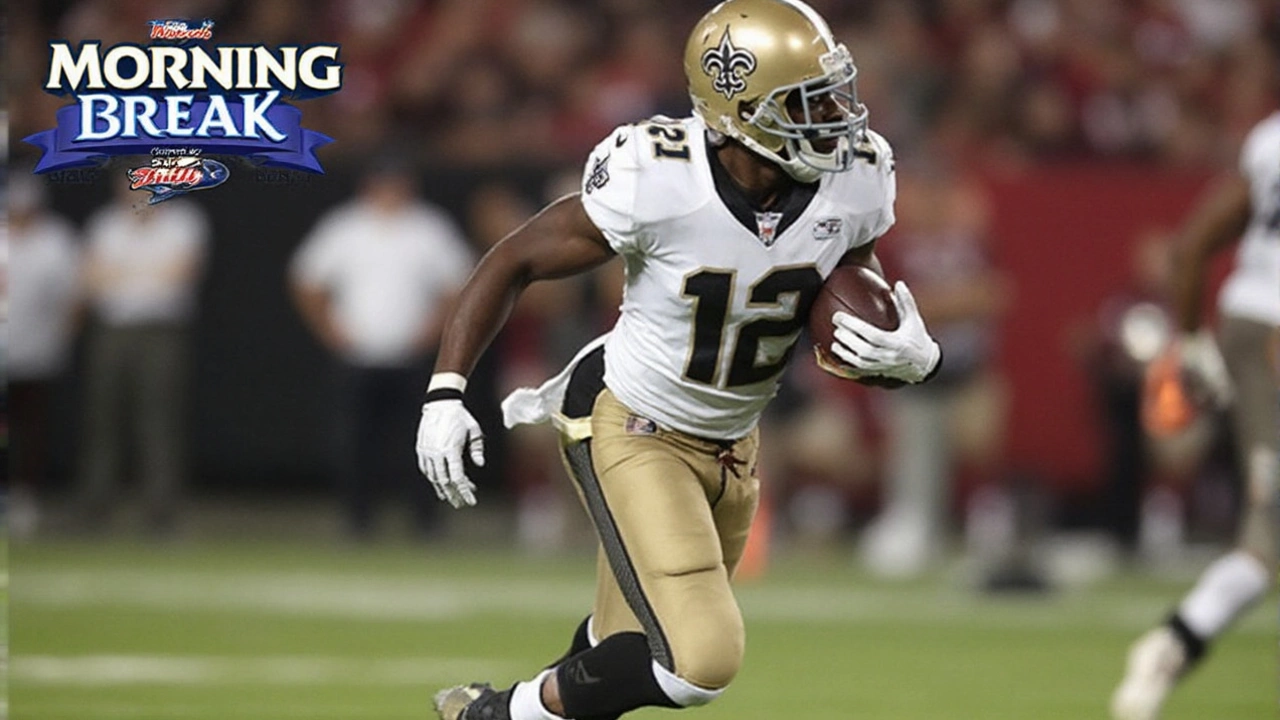Thirteen seconds, three shots, zero points: Saints’ furious finish comes up short
Thirteen seconds on the clock. Three heaves into the end zone. Zero points. That was the endgame for New Orleans in a 20-13 loss to Arizona that felt like it was there for the taking, then wasn’t. In a tense Saints vs Cardinals opener at the Caesars Superdome, second-year quarterback Spencer Rattler brought the Saints to the Arizona 18-yard line with a chance to tie. He never found the throw to finish it.
Rattler, making his seventh NFL start, looked composed for most of the day. He moved the ball with timing throws and kept it clean: 214 passing yards, no interceptions, and several chains-moving completions in hurry-up. The final drive was his best work—quick outs, smart sideline shots, a middle seam to put the Saints in the red zone. But with 13 seconds left, the Cardinals tightened, the windows closed, and his last pass drifted just out of bounds.
Alvin Kamara supplied New Orleans’ lone touchdown, an 18-yard burst around the right edge, where he turned a crease into a highlight—one cut, two missed tackles, and a glide into the end zone. Blake Grupe later drilled a late field goal that cut the gap to seven with 2:42 remaining, setting up that final surge that had the Superdome on its feet.
Arizona didn’t blink. Kyler Murray did what a veteran quarterback does on the road: kept the offense on schedule, punished mistakes, and turned red-zone trips into touchdowns. He threw two scores, including a strike to rookie wide receiver Marvin Harrison Jr., who continues to look like he belongs from snap one. The Cardinals’ defense took it from there—bending a little, never breaking when it mattered.
Penalties hurt New Orleans all afternoon. Drive-killing flags wiped out rhythm, erased a handful of chunk plays, and turned manageable downs into long-yardage scrambles. The scoreboard told the story by quarters: Arizona posted 3-14-3-0, while the Saints went 0-10-0-3. New Orleans had stretches of control on defense and flashes on offense, but every time momentum flickered, a flag or a missed chance snuffed it out.
There were bright spots on defense. Cornerback Alontae Taylor timed a perfectly called corner blitz in the fourth quarter, sacking Murray on third down to force a punt and hand Rattler one last shot. That moment felt like a hinge of the game—special teams reset the field, the offense found tempo, and the crowd roared. It just didn’t translate into points.
Afterward, Cardinals cornerback Will Johnson boiled their mindset down to a single theme: “It was really guys straining to finish. That’s what we harp on, and we put that on display.” That was the difference—Arizona closed the door in the final 20 yards. New Orleans cracked it open, but never stepped through.
The Saints’ head coach didn’t sugarcoat the result but liked his quarterback’s edge. “Spence did some good stuff. I love the way he approached it, the mindset he played with. He gave us a chance.” With new faces on the staff and a young quarterback still stacking starts, that’s the early-season balance—growth you can point to alongside a loss you can’t talk away.

What decided it—and what it means for both teams
Three themes framed the opener: execution in the red zone, discipline, and finishing drives. Arizona won two of the three, and that was enough on the road.
- Red-zone contrast: The Cardinals turned prime field position into touchdowns; the Saints had to settle once and came up empty late. Rattler’s accuracy between the 20s showed promise, but the route spacing and timing near the goal line need polish.
- Discipline gap: New Orleans’ penalties arrived at the worst times—on third-and-manageable, after chunk gains, and on special teams. Arizona avoided the big mistake and let the Saints beat themselves in spots.
- Finishing drives: Murray’s two touchdowns underscored Arizona’s poise. The Saints had momentum shots in each half and didn’t cash them in often enough.
For Rattler, the stat line is streaky in a different way: this was his seventh straight loss as a starter, yet it didn’t feel like a quarterback unraveling. He protected the ball, processed pressure, and kept his eyes up when the pocket shifted. Late-game chemistry will be the next step—consistency with route adjustments, quicker red-zone decisions, and finding the mismatch before the snap rather than after it.
Kamara looked fresh, and his touchdown was classic—vision, balance, and the kind of acceleration that turns an outside zone into a race he usually wins. When the Saints paired him with tempo, the offense found rhythm. Expect more early-down touches and designed screens to keep him involved when defenses play two-high to cap explosive plays.
Arizona’s rookie headliner delivered. Harrison Jr. fought through contact, won leverage in the red area, and gave Murray a clean window for the score. That simplifies everything for a quarterback—when the coverage squeezes inside the 10, trust and timing matter more than scheme. The Cardinals also sprinkled in enough motion and misdirection to keep New Orleans from teeing off on their protections.
On defense, the Saints mixed coverages and brought pressure from depth—safeties rotating late, a nickel blitz here and there, and Taylor’s corner blitz in the fourth. The plan worked in phases. Where it cracked was in the middle of the field on early downs, where Murray’s quick game and a steady run complement set up second-and-short instead of second-and-long. That’s where Arizona stayed comfortable.
Special teams were mostly steady for New Orleans. Grupe hit the late field goal to narrow it to one score, and coverage units avoided the backbreaking return. Field position wasn’t the problem—finishing was.
New Orleans can live with the scoreboard if the penalties shrink and the red-zone script tightens. That’s fixable in September: cadence discipline on the road and at home, cleaner hands downfield, and sharper pre-snap communication to avoid the drive-stallers. With new coaches in the room, the operation should speed up as the season settles.
For Arizona, this was a road blueprint. Murray didn’t force throws into traffic, took the layups, and let his playmakers do the heavy lifting. The defense disguised pressure without losing leverage on the perimeter, and when the Saints reached the fringe of the red zone, the Cardinals won with leverage and length at the catch point.
By the numbers that matter, the narrative tracks. Arizona stacked a 20-10 lead entering the fourth and forced New Orleans to play uphill. The Saints scratched back to 20-13 with 2:42 left, made a stand on defense, and earned their last possession with a chance to tie. They just met a defense that refused to crack inside the 20—again.
Week 1 can lie, but it usually tells you how a team wins and what it needs to fix. For the Saints, the path is clear: reduce the flags, lean into Kamara, keep Rattler in rhythm, and turn red-zone trips into touchdowns. For the Cardinals, keep feeding Harrison Jr., protect Murray with tempo and spacing, and trust a defense that just proved it can close in the toughest building in the NFC South.
The season doesn’t wait. New Orleans showed enough to believe the offense will grow with reps, and the defense flashed the kind of timely pressure that travels. Arizona banked a quality road win behind a veteran quarterback and a rookie wideout who looks ahead of schedule. Week 1 rarely decides anything—but it leaves a mark, and both teams will wear this one into next Sunday.
